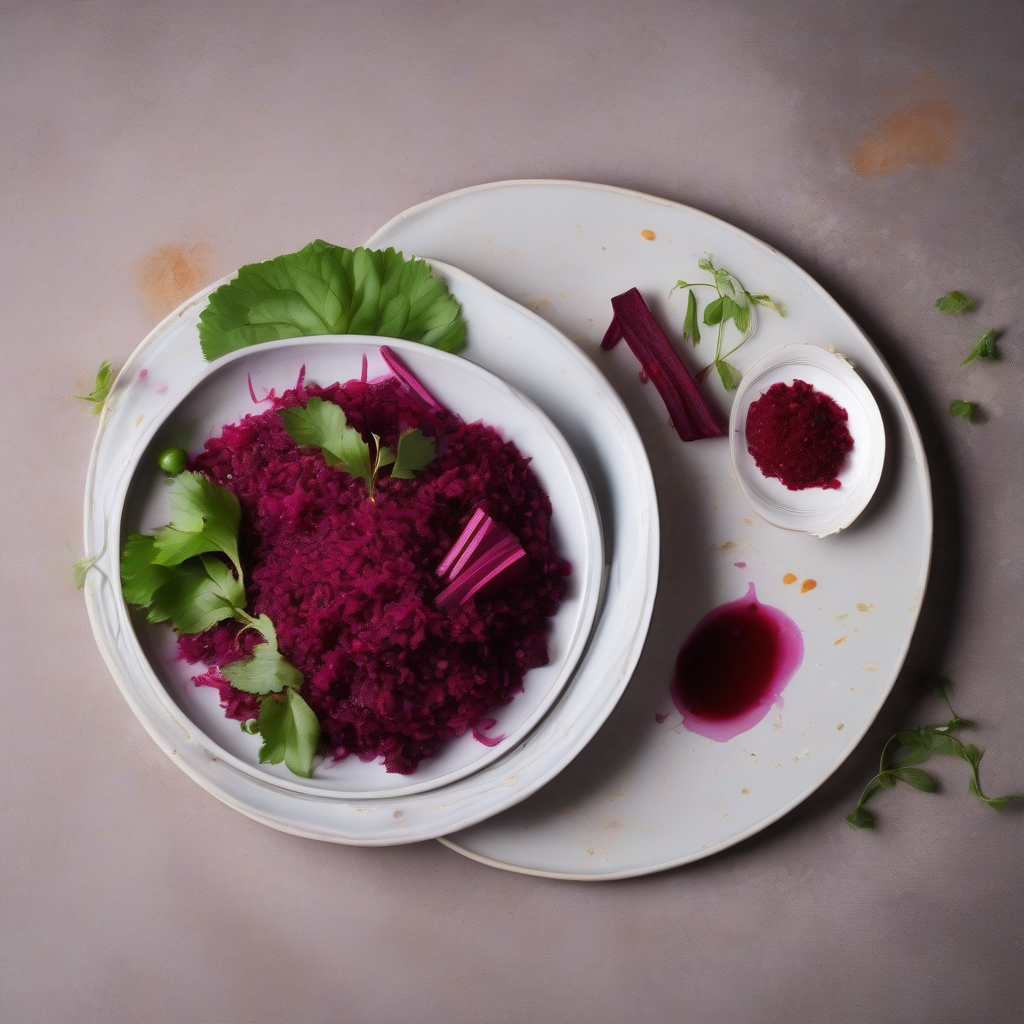Acha ji, Suno toh! Beetroot Kanji: The Desi Probiotic Powerhouse!
Namaste and Sat Sri Akal, my food-loving friends! Chef Curry Do’pyaza here, back with a recipe that’s not only good for your gut but also a burst of tangy, earthy flavour. Today, we’re diving into the vibrant world of Beetroot Kanji – a fermented, probiotic-rich drink that’s as delicious as it is healthy.
Kanji is a beloved drink, especially in North Indian homes. It’s a staple during the vibrant festival of Holi, where its tangy zest cuts through the richness of all the festive sweets and snacks. You’ll also find it gracing tables during the cooler months, as it’s believed to possess warming properties. This ruby-red elixir is more than just a drink; it’s a tradition, a taste of home, and a boost for your well-being.
A Little History Lesson
Kanji has been around for centuries, passed down through generations. It’s a simple yet ingenious way to preserve vegetables and create a naturally fermented drink. The exact origins are a bit hazy, but it’s deeply rooted in the culinary traditions of North India. Think of it as our desi version of kombucha, only way tastier, hai na?
Let’s Get Cooking!
Preparation Time: 15 minutes
Fermentation Time: 3-7 days (depending on the weather)
Cooking Time: 10 minutes (for boiling water)
The Magic Ingredients
- Beetroot (Chukandar): 500 grams, peeled and cut into thick sticks
- Black Carrots (Kali Gajar): 250 grams (optional, but adds a lovely colour and flavour), peeled and cut into thick sticks
- Mustard Seeds (Rai): 2 tablespoons, coarsely ground
- Red Chilli Powder (Lal Mirch Powder): 1 teaspoon (adjust to your spice preference)
- Black Salt (Kala Namak): 2 tablespoons (this is what gives it that characteristic tangy flavour)
- Asafoetida (Hing): A generous pinch
- Water: 4-5 litres, boiled and cooled
Step-by-Step: From Kitchen to Kanji Bliss
- Boil the Water: In a large pot, bring the water to a rolling boil. Let it cool completely. This is crucial to kill any unwanted bacteria.
- Prep the Veggies: Wash, peel, and cut your beetroots and black carrots (if using) into thick sticks. The size doesn’t matter too much, but sticks are traditional and look pretty.
- Grind the Mustard Seeds: Coarsely grind the mustard seeds. You can use a mortar and pestle or a spice grinder.
- Mix it All Up: In a large, clean glass or ceramic jar (avoid plastic), combine the beetroot, black carrots, ground mustard seeds, red chilli powder, black salt, and asafoetida.
- Pour in the Water: Pour the cooled boiled water over the ingredients, ensuring everything is submerged.
- Cover and Ferment: Cover the jar with a clean muslin cloth or a loose lid. This allows air to circulate while keeping out dust and insects.
- Wait Patiently: Place the jar in a warm, dark place for 3-7 days. The fermentation time will depend on the temperature. Warmer weather speeds up the process.
- Taste and Test: After 3 days, start tasting the Kanji daily. It should have a tangy, slightly sour flavour. Once it reaches your desired level of tanginess, it’s ready!
- Chill and Enjoy: Strain the Kanji through a muslin cloth to remove the vegetables and spices. Store it in the refrigerator. It will continue to ferment slowly, so consume it within a week for the best flavour.
Chef Curry’s Gyan (Tips) for Kanji Perfection
- Cleanliness is Key: Use a thoroughly cleaned jar to prevent any unwanted bacteria from spoiling your Kanji.
- Quality Ingredients: Use fresh, high-quality beetroots and mustard seeds for the best flavour.
- Taste and Adjust: Don’t be afraid to adjust the amount of red chilli powder and black salt to your liking.
- Sunlight is a No-No: Keep the jar away from direct sunlight during fermentation.
- Patience is a Virtue: Don’t rush the fermentation process. Let the Kanji develop its flavour naturally.
Cooking Mediums
This recipe primarily relies on fermentation, so no traditional cooking methods like gas stove, induction stove, oven, microwave, air fryer, or pressure cooker are directly involved. However, the water needs to be boiled, which can be done using any of these mediums:
- Gas Stove/Induction Stove: The classic and reliable methods for boiling water.
- Microwave: You can microwave the water in a microwave-safe container.
- Electric Kettle: A convenient and quick way to boil water.
Nutritional Powerhouse
Beetroot Kanji is packed with goodness! Beetroot is a great source of antioxidants, vitamins, and minerals. The fermentation process creates probiotics, which are beneficial for gut health. Black salt adds trace minerals and aids digestion. Overall, this drink is a fantastic way to boost your immunity and improve your digestive system.
Serving Suggestions
- Chilled: Serve Beetroot Kanji chilled, especially during hot weather.
- As an Appetizer: It makes a refreshing and tangy appetizer before a meal.
- With Snacks: Pair it with spicy snacks like pakoras or samosas for a delightful contrast.
- As a Digestive Aid: Drink a small glass after a heavy meal to aid digestion.
- Garnish: Garnish with fresh mint leaves or a sprinkle of black salt for an extra touch of flavour.
Time to Get Fermenting!
So there you have it, folks! My simple yet delicious recipe for Beetroot Kanji. I urge you to try this amazing drink at home. It’s easy to make, incredibly healthy, and a true taste of Indian tradition. Share this delightful drink with your friends and family, and let them experience the magic of homemade probiotics.
Khush Raho, Tandurust Raho! (Stay happy, stay healthy!)
